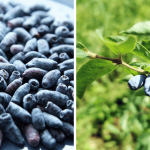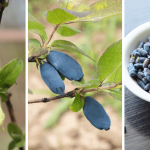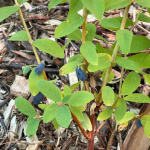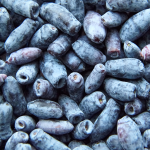Plant Profile: Haskap Berries – The Superberry of the North
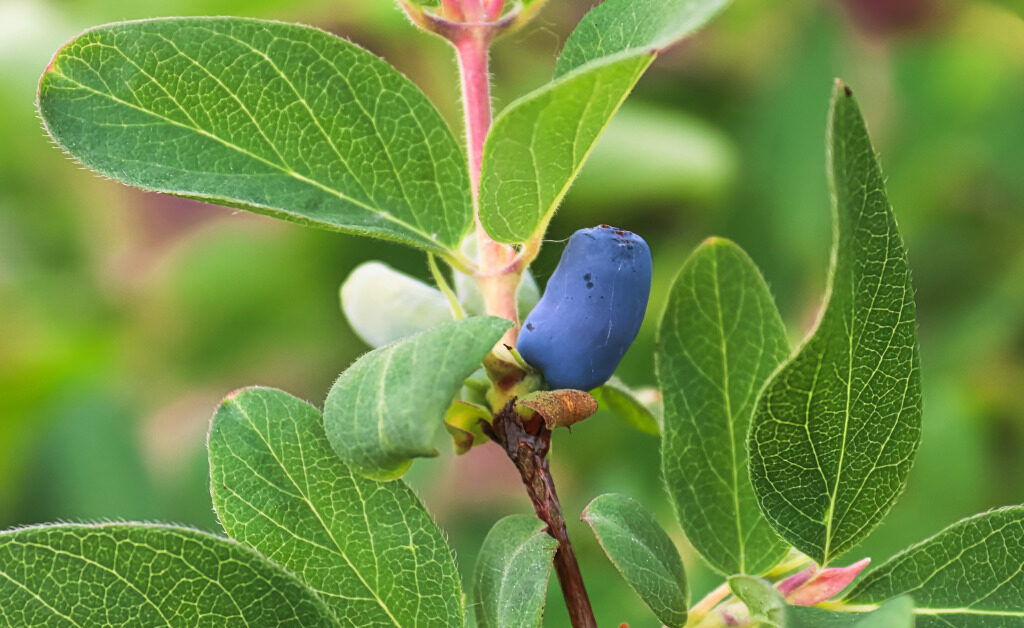
Haskap berries, scientifically known as Lonicera caerulea, are also commonly referred to as honeyberries or blue honeysuckle. This berry is gaining popularity for its unique taste and versatility in various gardening systems.
Classification
- Kingdom: Plantae
- Order: Dipsacales
- Family: Caprifoliaceae
- Genus: Lonicera
- Species: L. caerulea
Origin and Distribution
Originally from Russia, Japan, and Northern China, Haskap berries have found a home in North America, thriving particularly in USDA zones 2-7. Their adaptability to different climates has facilitated their spread globally.
USDA Hardiness Zones
Haskap berries flourish in USDA hardiness zones 2 to 7, making them a great choice for gardens in a variety of climates, including those in Scandinavian regions.
Chill Hours Requirement
Haskap berries require between 800 to 1000 chill hours for optimal growth, making them well-suited for cooler climates.
Growth Habits
These bushes can reach heights of 1.5 to 2 meters (4.9 to 6.6 feet) and a width of 1.5 meters (4.9 feet). They prefer well-drained soil and full sun to partial shade conditions. The growth rate is moderate, with plants establishing themselves fully in 3 to 5 years.
Role in a Food Forest
In a food forest, Haskap berries typically occupy the shrub layer, providing a lush ground cover and offering a habitat for beneficial insects.
Benefits for Hugelkultur or Permaculture Systems
In hugelkultur and permaculture systems, Haskap berries help in soil conservation and enhance biodiversity. Their deep roots help in nutrient cycling, bringing up nutrients from deeper layers of the soil.
Culinary and Medicinal Uses
Haskap berries are a culinary delight, used in jams, jellies, and wines. While there are claims of medicinal benefits, it is essential to consult credible sources for backed scientific information regarding its medicinal use.
Cultural Significance
In Japan, the Ainu people have a long history of using Haskap berries in their diet, and the berry holds a special place in their culture.
Propagation and Care
For detailed guidance on propagation, refer to our comprehensive guide on Haskap propagation made easy. Generally, they are propagated through hardwood cuttings and require a well-drained soil enriched with organic matter for optimal growth.
Pests and Diseases
Pests such as aphids and powdery mildew can affect Haskap berries. Implementing integrated pest management strategies can help in controlling these issues.
Harvesting and Storage
Harvesting occurs in early summer when the berries turn a deep blue color. They can be stored in a cool place for a short period or frozen for longer storage.
Plant’s Lifespan
Haskap berries are perennial plants, offering a fruitful yield year after year for several decades.
Warnings or Cautions
While generally safe, it is always recommended to consume Haskap berries from known and safe sources to avoid any potential issues with pesticides or contaminants.
Environmental Impact
Haskap berries are known to be beneficial to the environment, promoting soil health and encouraging biodiversity in gardens and permaculture systems.
Wildlife Attraction
The berries attract a variety of wildlife, including birds and pollinators, which can bring a vibrant ecosystem to your garden.
Companion Planting
Haskap berries pair well with plants like garlic and marigolds, which help in pest control. Avoid planting them near walnut trees as they can inhibit their growth.
21. Fun Facts
A Superberry in the True Sense
Did you know that Haskap berries are a powerhouse of nutrients, truly deserving the title of a “superberry”? Research has shown that these berries contain a significantly higher concentration of cyanidin-3-O-glucoside (C3G), a potent antioxidant, compared to a range of popular North American berries including blueberries. Specifically, Canada-bred haskap varieties have been found to contain between 68 and 649 mg of C3G per 100 g of fresh weight, which is considerably higher than the C3G content in blueberries, which is about 3.0 mg per 100 g of fresh weight.
Vitamin C Rich
But that’s not all! Haskap berries are also a rich source of vitamin C, with some varieties containing between 29 and 187 mg of vitamin C per 100 g of fresh weight. To put this in perspective, this is significantly higher than the vitamin C content in oranges, which contains about 53.2 mg per 100 g of fresh weight. This high vitamin C content not only positions haskap as one of the richest sources of this vital nutrient but also suggests that it can offer greater health benefits compared to other commonly consumed berries [1].
A Berry with a Promising Future
Given these impressive nutritional credentials, it’s no surprise that haskap berries are currently a hot topic in the field of nutritional research. Scientists are keen to explore the full range of health benefits that this “superberry” can offer, with current research suggesting potential antioxidant, anti-inflammatory, and cardio-protective effects, among others. It’s an exciting time to be a haskap enthusiast, as we watch this humble berry rise to prominence as a potential new superfruit in the health and wellness sphere [2].
References
- ScienceDirect – The potential health benefits of haskap (Lonicera caerulea L.): Role of cyanidin-3-O-glucoside
- Canadian Journal of Plant Science – Haskap: A new berry crop for Canada
Further Reading
For more insights on how Haskap berries can thrive in wet climates, explore our articles on Haskap in a wet USDA Zone 7 climate and Indoor Haskap Care: Adapting to Early Frosts and Sudden Growth.

